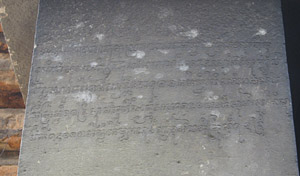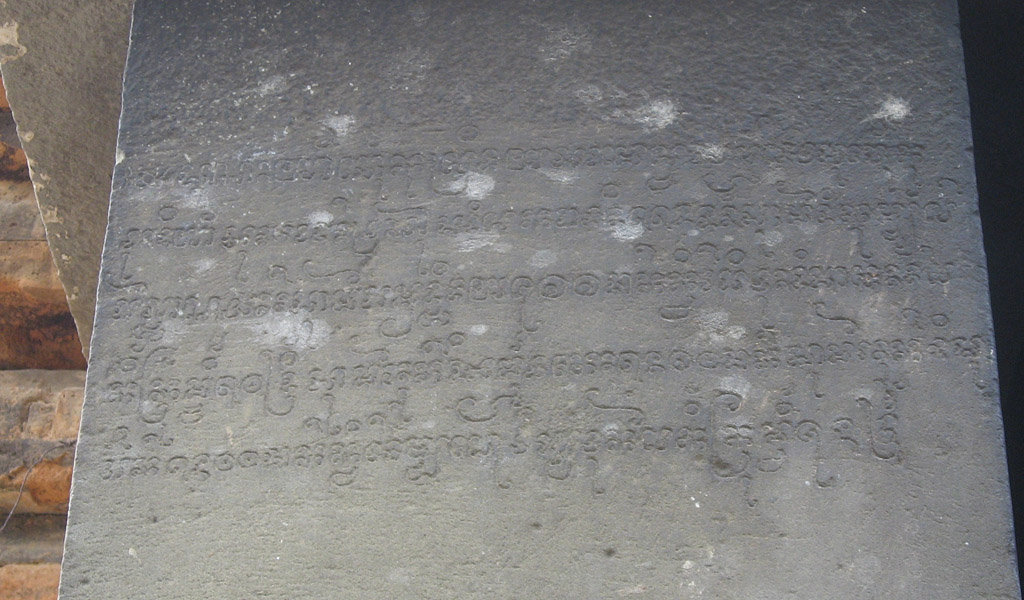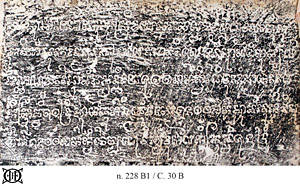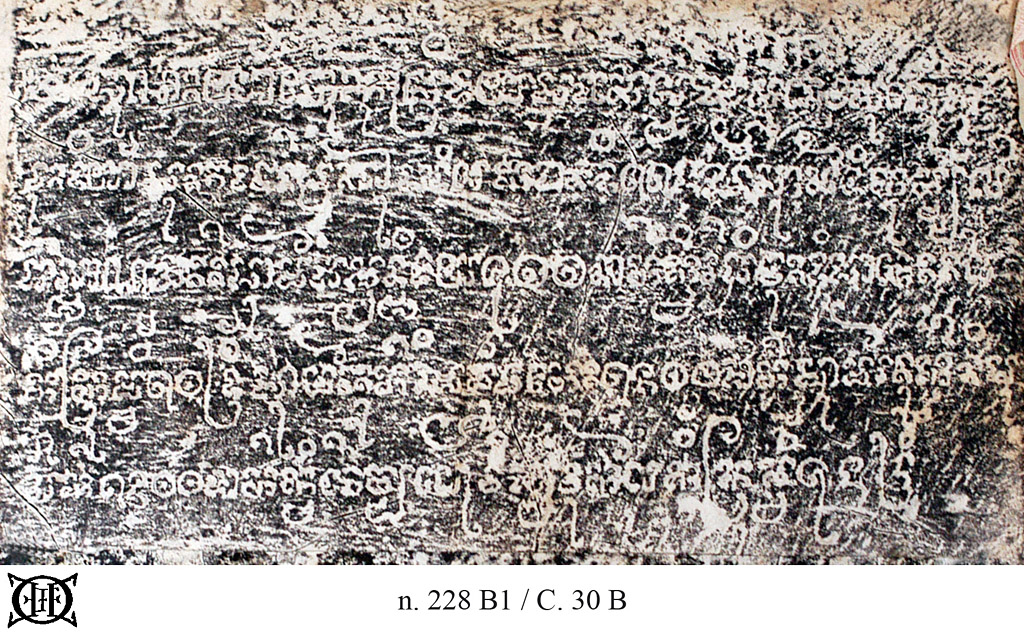Corpus of the Inscriptions of Campā




C. 30 B1 Southern doorjamb of the main shrine of Po Nagar
Please note: you are reviewing a preprint version of this publication. Contents here may change significantly in future versions. Scholars with specific interests are urged to consult all cited bibliography before using our texts and translations or drawing other significant conclusions.
Text The five first lines on the anterior face of the Southern doorjamb of the entrance to the main shrine. Written in Old Cam.
Date 1155 Śaka (1233/4 CE).
Origin Temple of Po Nagar at Nha Trang (Khánh Hoà, Vietnam).
This inscription was found in situ before 1888, when it was first mentioned in the literature (Bergaigne 1888: 88). We identified the inscription on the temple site in 2009.
Edition(s) A few words were read in Bergaigne 1888: 88; partially published, with French translation, in Aymonier 1891: 48-49; whence, with translation into English, in Majumdar 1927: 207 and Golzio 2004: 179-180; whence again, with French translation, in Schweyer 2005a: 94. The present edition and translation after ECIC IV: 260 where we have re-edited the text from the inked EFEO estampage and the stone.
Facsimiles
- Estampage: BnF 409 (60)
- Estampage: EFEO 20
- Estampage: EFEO n. 228.1
The following text was edited by Arlo Griffiths and Amandine Lepoutre.
1 ((quatrefoil)) puṇaḥ ◇ || puṇaḥ Schweyer. — 2 ṅan ◇ ṅgan Schweyer. — nī ◇ dī Schweyer. — nī ◇ | nī Schweyer. — kumvyām̃l ◇ kumvyāl Schweyer. — 3 sthāṇa ◇ sthāna Schweyer. — 4 nī ◇ di Schweyer. — dharmmathateḥ ◇ dharmmathataiḥ Schweyer. — 1800 ◇ 1900 Schweyer. — ni ◇ di Schweyer. — 5 drim̃ ◇ driy || Schweyer.
Translations
English
Furthermore, Y.P.K. Śrī Jayaparameśvaravarmadeva, the P.P.K., offered to Yām̃ Pu Nagara and the Holy Form in this year of the Śaka king 1155: rice-field at Kumvyām̃l, one unit. In this place, the rice-field of great abundance; 400 jāk. Khmers who are given to this domain: 10 men and women; this rice-field vanūk at Dharmmathateḥ: 1800 jāk; this rice-field vanūk at Pu Auk: 1500 jāk; Khmers, Cams, Chinese (?), Siamese, Paganese: 45 men and women.
French
En outre, Y.P.K. Śrī Jayaparameśvaravarmadeva, le P.P.K., offrit à Yām̃ Pu Nagara et à la Sainte apparence en cette année du roi des Śaka 1155 : la rizière de Kumvyām̃l, un emplacement. En ce lieu, la rizière de grande abondance : 400 jāk. Des Khmers qui sont donnés à ce domaine : 10 hommes et femmes ; cette rizière vanūk de Dharmmathateḥ : 1800 jāk ; cette rizière vanūk de Pu Auk : 1500 jāk ; ses Khmers, des Cams, des Chinois (?), des Siamois, des Paganais : 45 hommes et femmes.
Commentary
Secondary Bibliography
- Parmentier 1909: 131.2
Notes
- There are several estampages under the number n. 228.
- Parmentier erroneously speaks of 6 lines and wrongly includes the date 1148 under this text; he seems to have read Aymonier 1891: 48 too quickly.



The difficult sequence humā di kumvyām̃l· sā sthāṇa anan· humā samṛddhījaya may be compared with C. 5, ll. 9-10 and 14-15.
Concerning the translation of the term lauv as 'Chinese', see our commentary in C. 7. Schweyer translated it as "Lao".